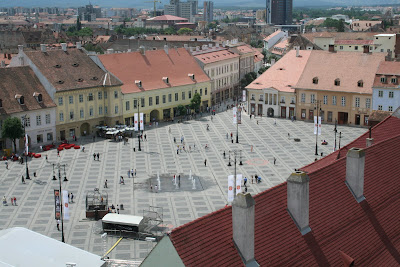Situated in the Sourthern part of Piatra Craiului Mountains, the Rucar - Dambovicioara zone is characterised by a varied and spectacular Karst relief. River flowing down from Fagras, Piatra Craiului and Leaota Mountains have digged in the limestones fro here narrow and deep valleys, developind on a relatively restraint area the biggest gorges complex from our country (see the map). Many erosion forms are here, underground and on the surface. Little or middle size caves are frequent. The most known is "Dambovicioara". Situated in the Northern part of the village with the same name - at about 1 km - este very accessible for the tourists, the entrance being just near the road that crosses the Dambovicioara Gorges.
250 m long, this cave has the aspect of little ramificated gallery, with an ascendent line (see the map); it can be easyly visited, having the ceiling higher the a man (aprox. 2 m). In the interior there are good visiting conditions - slight air current sign that there is an other entrance. Temperature is between 10-12°C, and the humitidt is moderate. The fauna is relatively poor: no cave spieces have been found, only fossiles of the cave bear (Ursus spelaeus).
The cave is known since 1579, year in which the cave is attested documentary during Mihnea Turcitul ruling. Later in 1767, J. Fridvalsky writes about this cave in a scientific work Mineralogia magni Principatus Transilvaniae, some this cave is the first Karst form from Wallachia mentioned in a scientific study.
Recent researches descovered new galleries, but there are not yet introduced in the visiting circuit.
Even is not very important from speleogical point of view (many of the stalactites and stalagmites being destroyed by some visitors), the cave is an important touristic objective, by its localisation, at the bottom of Piatra Craiului, with many natural beauties, with chamois and vultures, ozonized air, clear waters.
Even is not very important from speleogical point of view (many of the stalactites and stalagmites being destroyed by some visitors), the cave is an important touristic objective, by its localisation, at the bottom of Piatra Craiului, with many natural beauties, with chamois and vultures, ozonized air, clear waters.
In this picturesque area there some halting places like "Brusturet" or "Piatra Craiului" Chalets and varied monuments created by man: Oratea Fortress, Dambovicioara Bridge etc.






















